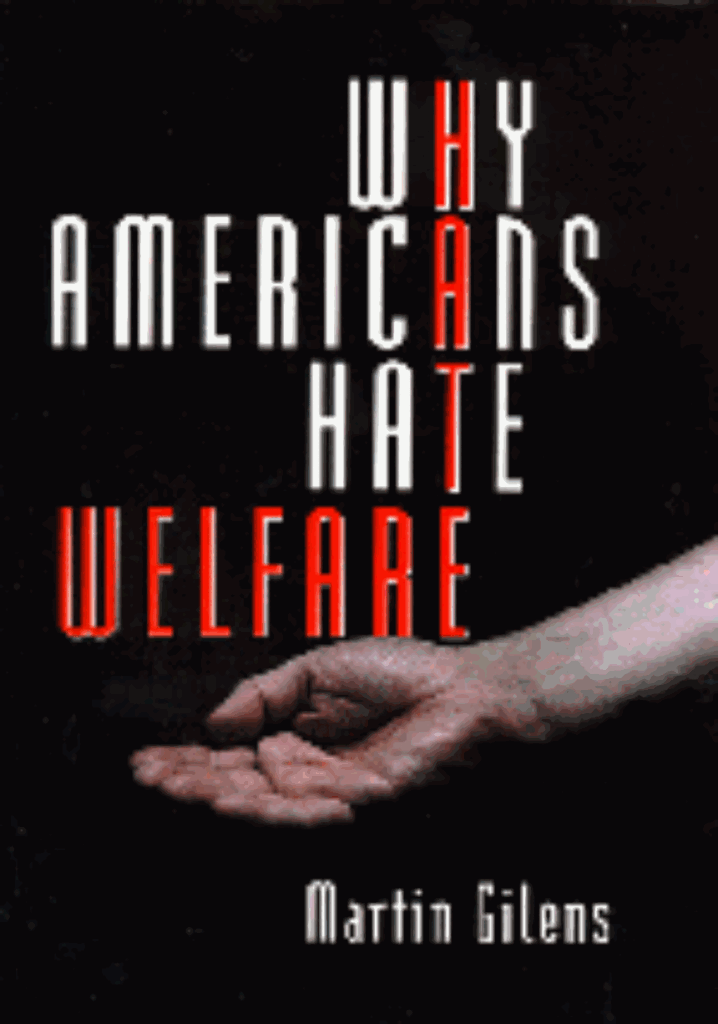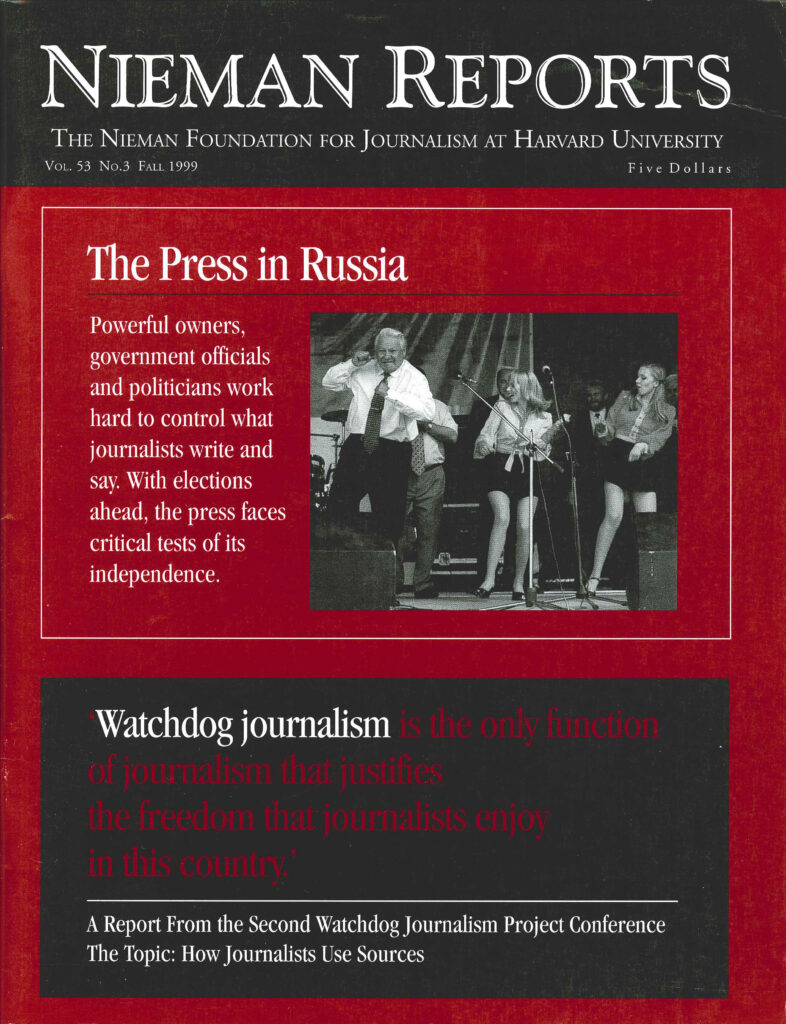
Martin Gilens
University of Chicago Press. 296 Pages. $25.00.
One of the toughest things about being journalists is separating ourselves from prejudices that shape us as people. To pretend that those prejudices don’t exist or that they don’t act as a filter on our perceptions is either unrealistic or dangerous or both.
So it is necessary to note that as a journalist who also is black I was predisposed to hear the basic premise of Martin Gilens’s book, “Why Americans Hate Welfare: Race, Media and the Politics of Antipoverty Policy,” because my expectations and experience indicate that racial attitudes and media imagery influence public perceptions, in general. However, this book raises questions about the ways in which race and media shape perceptions about the poor, in particular.
In spite of my predisposition to support its premise, I was happily surprised by the content of the book and impressed by how little of it was devoted to the ideological ranting or simplistic distortions that too often pass for political debate. Gilens, who is associate professor of political science and a fellow at the Institution for Social and Policy Studies at Yale University, dissects a variety of well-documented explanations for public resentment of welfare: the credo of individualism; middle class self-interest; suspicion about the true neediness of welfare recipients, and white perceptions that the black poor don’t value a work ethic. Each aspect is important to the complex web of perceptions Americans have about welfare, and Gilens declares his intent to subject each of them to “empirical scrutiny.”
The result is a scholarly analysis gleaned from original research by the author and from studies conducted by others over many years. (As Gilens states, the book began as a dissertation and he and his wife had two children while he was writing it.) The complexities and ambiguities that are so often subsumed by the politics of race and poverty are, in Gilens’s book, able to surface and to be brought into sharper focus.
Insights Gilens offers about racial attitudes are particularly compelling. But before he gets to that presentation, he challenges the widely held view that the public hates the principle of welfare; the very idea of giving taxpayer-funded assistance to poor people. He collates the findings of dozens of national opinion polls that show both strong public support for cuts in welfare spending and affirmation of the government’s responsibility to assist the poor. Gilens writes that the public is “of two minds”—cut welfare and provide the poor with specific services such as job training, education, child and elder care.
How can Americans want both of these policies? Gilens helps us understand.
He writes that this seeming contradiction is rooted in the political concerns of ordinary Americans about “who gets what” and “who deserves what.” In their minds, the deserving poor are worthy because they are perceived as hard working, despite their impoverished status.
[Gilens] challenges the widely held view that the public hates the principle of welfare; the very idea of giving taxpayer-funded assistance to poor people.
On the other hand, welfare—which Gilens defines as “means-tested, cash payments to able-bodied, working age adults”—has garnered a bad reputation in the public mind. Welfare is associated with the “undeserving poor,” those perceived as unwilling to support themselves, preferring to sit home and collect a check, unwilling to work hard. It is also a widely held belief that it is the undeserving poor who get “welfare,” and it is at this point that negative attitudes about black people become a factor.
As Gilens writes, “race-based opposition to welfare stems from the specific perception that, as a group, African Americans are not committed to the work ethic.” The lazy black. It is a pernicious stereotype as old as slavery. Gilens contends that biased media coverage of poverty may have energized this enduring negative stereotype and helped to link it, in the public mind, to welfare. Most journalists, he writes, appear to consciously reject the stereotype of blacks as lazy. But “in the everyday practice of their craft…these same journalists portray poor blacks as more blameworthy than poor whites.”
He cites numerous earlier studies that demonstrated how media coverage influences public perceptions of the poor, the overall impact of visual elements in news stories, and the “significant impact” on beliefs and attitudes of racial imagery in news coverage. Gilens’s own research focused on more than 1200 carefully defined poverty stories in Time, Newsweek and U.S. News & World Report during 42 years, from 1950 to 1992. For television, Gilens counted the number of poverty stories that were broadcast on ABC, NBC and CBS nightly news between 1969 and 1992. But he measured the racial representation of poverty in TV coverage only for 1968, 1982-83 and 1988-92.
Poverty didn’t receive much attention from the newsmagazines during the 1950’s, and when it did pictures of poor whites accompanied the stories that were published. Coverage increased during the early 1960’s. Again, most of the images of America’s poor were white. But the early 1960’s also marked the beginning of what Gilens calls “the racialization of poverty” in news coverage.
From 1964 to 1965, the percentage of blacks who appeared in pictures of the poor jumped from 27 to 49 percent, at a time when the actual percentage of blacks among those whose income placed them among the poor was about 30 percent. Gilens reports a similar imbalance during subsequent decades and he argues that “distorted coverage found in newsmagazines reflects a broader set of dynamics that also shapes images of the poor in the more important medium of television news.”
As the picture of poverty progressively has darkened, according to Gilens, the tone of poverty coverage has grown more negative. Gilens found that since the mid-1960’s, stories about welfare mismanagement, inefficiencies and “The Welfare Mess” have featured pictures of blacks. More sympathetic stories, such as those describing how the national economic downturn threw middle class workers into poverty, used pictures of whites.
Gilens sets forth a number of likely explanations for this situation. For example, poor black people tend to live in distinct neighborhoods that are within easy reach of urban-based news outlets from which much of the nation’s reporting emanates. But he cites a study that shows only six percent of all poor Americans are blacks living in urban ghettos. What accounts then for his finding that black people were pictured in 62 percent and 65 percent of newsmagazine and television poverty stories at a time when African-Americans made up only 29 percent of the American poor?
Most journalists, [Gilens] writes, appear to consciously reject the stereotype of blacks as lazy. But ‘in the everyday practice of their craft…these same journalists portray poor blacks as more blameworthy than poor whites.’
He writes, “the overly racialized images of poverty and the association of blacks with the least sympathetic subgroups of the poor reflect news professionals’ own racial stereotypes, which operate as an unconscious influence on the content of the news they produce.”
This accusation is hard to hear. But the book is not a rant against the media, nor does it patronize the poor, the public, or even politicians. It’s a classically academic effort to examine why the public thinks the way it does about the poor and what these perceptions and attitudes mean for policies aimed at helping them. “Why Americans Hate Welfare” is tightly focused on a narrow aspect of public policy (welfare), but important insights result. Gilens does the numbers exhaustively, packing the book with surveys and statistics and supporting them with extensive citations. It’s a dry read occasionally, but it is also an important reference book for journalists who, in Gilens’s words, “are exposed to the same stereotypes and misperceptions that characterize society at large.”
Sharon Green is Senior Cultural Editor for NPR News and a Fetzer Institute Scholar. She has served as guest faculty at the Poynter Institute for Media Studies and formerly produced and anchored newscasts at NPR, Mutual Radio Networks, Voice of America, American Forces Radio Networks, Okinawa and American Forces Network Taiwan.



